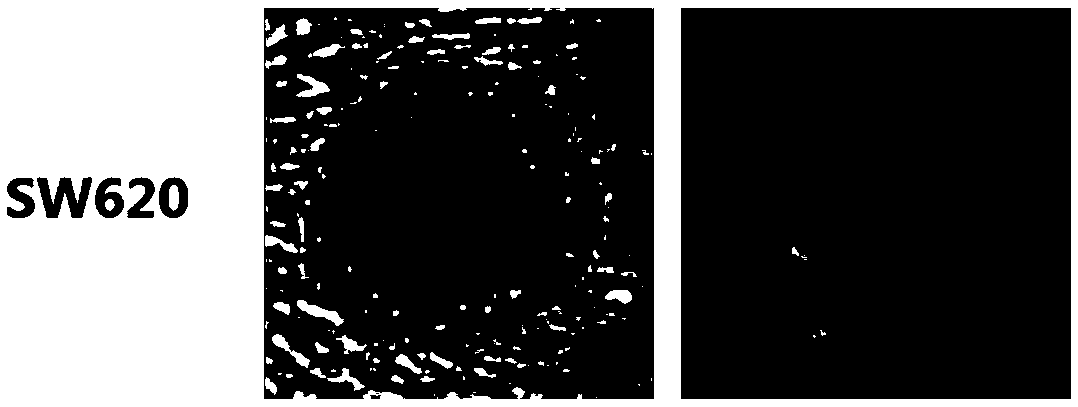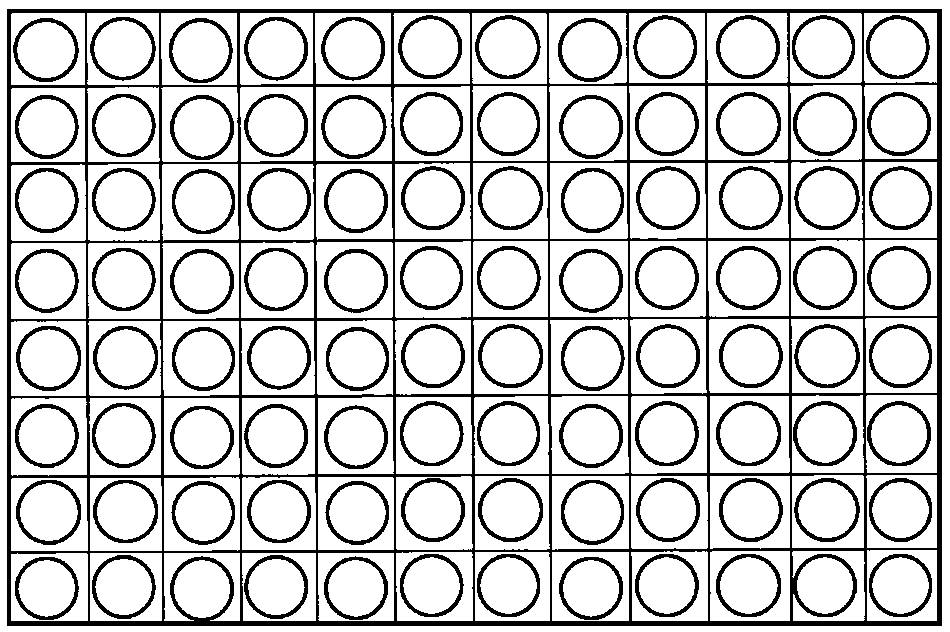In vitro tumor cell 3D collective invasion model and construction method thereof
A tumor cell and construction method technology, applied in the field of in vitro tumor cell 3D collective invasion model and its construction, can solve problems such as in-depth research on unfavorable tumor invasion, the inability of cells to directly determine whether they are tumor cells, and the inability to observe cell invasion.
- Summary
- Abstract
- Description
- Claims
- Application Information
AI Technical Summary
Problems solved by technology
Method used
Image
Examples
Embodiment 1
[0049] Example 1 Preparation of tumor multicellular spheroids
[0050] The colorectal cancer cells with good growth condition and adherent growth were washed with PBS, digested with trypsin, mixed with Gibco fetal bovine serum and Hyclone1640 medium, and resuspended in medium containing 10% fetal bovine serum. orifice plate. When plating, the cell density covers approximately 50-60% of the bottom of the well plate. Among them, two cell lines, SW620 and HT29, were selected to prepare two corresponding tumor multicellular spheroids, so as to facilitate the subsequent observation of different invasive abilities and states of different cell lines.
[0051] After the cells are in a good state of adherence and growth, phototransformation plasmids are transfected using the lipofection method, and the pDendra2-C Vector plasmids are transferred into the cells. The pDendra2-C Vector plasmids have green fluorescence; observe after 24 hours Cell fluorescence, SW620 cell line was transfe...
Embodiment 2
[0055] This example provides a method for constructing a 3D collective invasion model of tumor cells in vitro, using a laser confocal culture dish as a research device for the 3D collective invasion model of tumor cells in vitro.
[0056] In order to ensure that the growth and invasion of tumor multicellular spheroids are completely carried out in the 3D gel instead of along the glass bottom surface of the laser confocal dish, a small amount of prepared type I rat tail collagen needs to be added to the middle B area of the laser confocal dish, and ensure that The distance between the tumor cell spheroid and the glass bottom of the laser confocal culture dish was greater than 100 μm on average.
[0057] Among them, the commodity information of type I rat tail collagen is: Collagen type I, rat tail.
[0058] The preparation steps of type I rat tail collagen are as follows. All glue preparation steps and reagents (type I rat tail collagen, 10×PBS, dH 2 O, 1N NaOH) should be ...
Embodiment 3
[0078] This example provides a method for constructing a 3D collective invasion model of tumor cells in vitro, using a laser confocal culture dish as a research device for the 3D collective invasion model of tumor cells in vitro. The method is basically the same as that in Example 2, the main difference is that the tumor multicellular spheroids used in Example 3 are prepared by the hanging drop culture method.
[0079] Tumor multicellular spheroids prepared by hanging drop culture figure 2 Similar, but because the number of cells in the tumor cell spheroids prepared by the hanging drop method is difficult to control, this in vitro 3D collective invasion model of tumor cells can be used for qualitative analysis, but it is difficult to achieve quantitative analysis.
PUM
 Login to View More
Login to View More Abstract
Description
Claims
Application Information
 Login to View More
Login to View More - R&D
- Intellectual Property
- Life Sciences
- Materials
- Tech Scout
- Unparalleled Data Quality
- Higher Quality Content
- 60% Fewer Hallucinations
Browse by: Latest US Patents, China's latest patents, Technical Efficacy Thesaurus, Application Domain, Technology Topic, Popular Technical Reports.
© 2025 PatSnap. All rights reserved.Legal|Privacy policy|Modern Slavery Act Transparency Statement|Sitemap|About US| Contact US: help@patsnap.com



